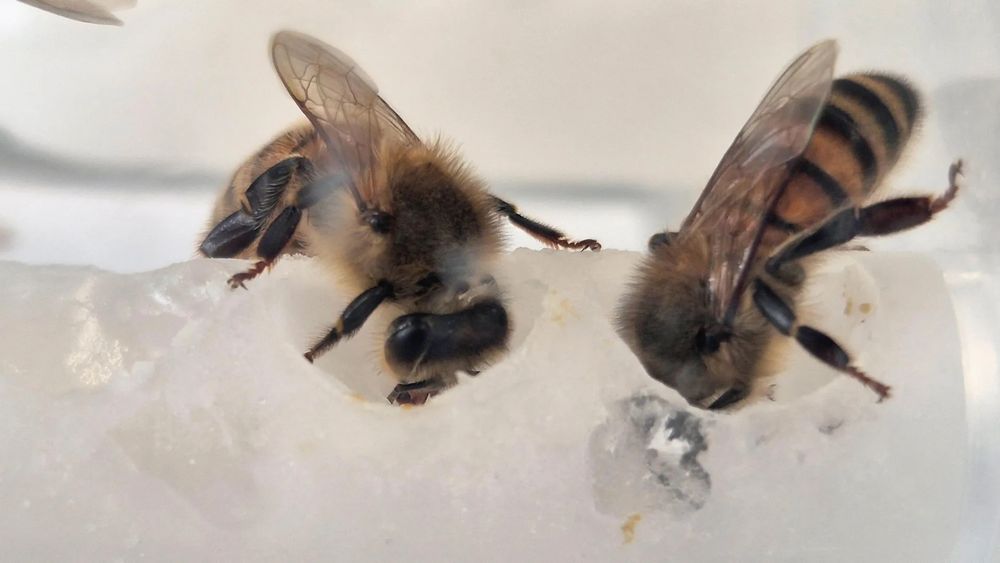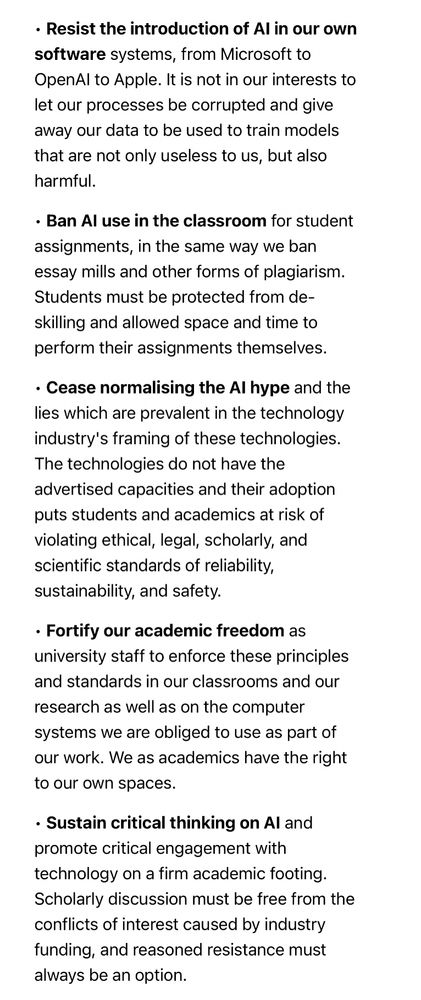
This feels like a spot of good news
www.sciencedaily.com/releases/202...
@hiramring.bsky.social
Linguist, musician, dabbler in arcane arts.

This feels like a spot of good news
www.sciencedaily.com/releases/202...
i’ll have to report back once the assignments are done!
29.07.2025 13:45 — 👍 0 🔁 0 💬 0 📌 0and the challenges typologically diverse languages can pose to identifying word classes. They also contribute to developing useful annotations for crosslinguistic research. I'm excited to see how students deal with the task, and as always appreciate any feedback! 3/3 #nlproc #lowresourcelanguage
29.07.2025 04:34 — 👍 0 🔁 0 💬 0 📌 0students will choose a low-resource language from the taggedPBC (github.com/lingdoc/tagged…) and annotate a selection of verses, using the NLTK library to train a tagger. Along the way they learn about dataset development, annotation, the language itself (and its family), 2/3 #datasets
29.07.2025 04:34 — 👍 0 🔁 0 💬 1 📌 0As part of revamping my introductory Python for Linguists course, I'm getting students to work on actual low-resource languages by developing a POS-tagger (hg2051-ntu.github.io/project1). Inspired partly by @rtommccoy.bsky.social’s post back in January, 1/3
29.07.2025 04:34 — 👍 0 🔁 0 💬 1 📌 0
• Resist the introduction of AI in our own software systems, from Microsoft to OpenAI to Apple. It is not in our interests to let our processes be corrupted and give away our data to be used to train models that are not only useless to us, but also harmful. • Ban AI use in the classroom for student assignments, in the same way we ban essay mills and other forms of plagiarism. Students must be protected from de-skilling and allowed space and time to perform their assignments themselves. • Cease normalising the AI hype and the lies which are prevalent in the technology industry's framing of these technologies. The technologies do not have the advertised capacities and their adoption puts students and academics at risk of violating ethical, legal, scholarly, and scientific standards of reliability, sustainability, and safety. • Fortify our academic freedom as university staff to enforce these principles and standards in our classrooms and our research as well as on the computer systems we are obliged to use as part of our work. We as academics have the right to our own spaces. • Sustain critical thinking on AI and promote critical engagement with technology on a firm academic footing. Scholarly discussion must be free from the conflicts of interest caused by industry funding, and reasoned resistance must always be an option.
If you agree with our 5 requests to our universities, please sign 🖊️ the open letter and don’t forget to confirm your email! ☺️🙏
openletter.earth/open-letter-...
whoa dude. take a chill pill.
automation increases productivity. feel free to go back to the era before factories if you like. this is just another step along that progression. is the current approach/hype incorrect? yes. can they still be useful in specific cases? also yes. let’s be practical.
here’s 2:
1) formatting/rephrasing text
2) idea generation
let me know if you want more elaboration. they’re pretty specific use cases & not useful without oversight, but can greatly speed up an existing workflow.
tbf, there are definite use-cases for current “Automated Inference” language tools that use LLMs, but calling them “reasoning” or “thinking” machines is spurious at best and deceitful at worst.
21.06.2025 06:34 — 👍 1 🔁 0 💬 0 📌 0you’d think these people would want AI to *work* instead of half-working. what they call “denialism” is just realism. if my automation in a car factory worked 90% of the time would I put it into production? maybe.. but not without significant controls!
17.06.2025 04:09 — 👍 1 🔁 0 💬 0 📌 0
Helloooo Sydney! See you next week:
events.humanitix.com/the-ai-con-i...
It’s really quite impressive what can be observed in a large (enough) and diverse (enough) dataset with the aid of automation. 3/3 #compling #linguistics #datasets #nlproc #typology
10.06.2025 01:38 — 👍 0 🔁 0 💬 0 📌 0…that correlate significantly with expert determinations of transitive word order in typological databases. The dependency-annotated dataset is somewhat noisy but provides an important baseline, with opportunities for significant improvement. github.com/lingdoc/tagged… 2/3
10.06.2025 01:38 — 👍 1 🔁 0 💬 1 📌 0
A new working paper that presents a dependency-annotated version of the *taggedPBC*: arxiv.org/abs/2506.06785 - here I show that for 1500+ languages, dependency relations transferred via English allow for extraction of transitive word order patterns (SVO, VSO, etc)… 1/3
10.06.2025 01:38 — 👍 0 🔁 0 💬 1 📌 0
I’m generally more partial to language-internal explanations for change, but external influence can’t be ruled out. I also have a working paper where I explore some other (crosslinguistic) pressures like the relative lengths of words: arxiv.org/abs/2505.13913
31.05.2025 00:10 — 👍 0 🔁 0 💬 0 📌 0it does seem to go the opposite direction more often, but that may just be an artifact of recent globalization, with large influencing lgs being V-medial/final. Some reconstructions of proto-Austronesian also posit V-medial/final, but again, shift to V-initial likely happened quite early.
31.05.2025 00:03 — 👍 2 🔁 0 💬 1 📌 0pre-Ancient Irish is assumed to have been xVx or xxV on the basis of its descent from Proto-Indo-European, but at least as early as the 700s it was clearly Verb-initial. Ancient Mayan was also likely non-V-initial, but most of its descendants are.
30.05.2025 23:18 — 👍 1 🔁 0 💬 0 📌 0v. concerning. was asked by a linguistics asst prof the other day why i’m not interested in researching how llms do things with language & basically told them there’s nothing to learn from llms about human language. people just don’t think logically anymore.
24.05.2025 07:32 — 👍 2 🔁 0 💬 0 📌 0Python code to extract the stats and re-run the analyses are all at the linked repo. Feel free to investigate the data on your own and I appreciate any/all feedback or contributions! 6/6
23.05.2025 07:09 — 👍 0 🔁 0 💬 0 📌 0research I propose a “Min-Max” theory of language behavior that can account for a variety of linguistic patterns crosslinguistically. #languagechange #processing #efficiency #evolution #historical #linguistics #nlp 5/6
23.05.2025 07:09 — 👍 0 🔁 0 💬 1 📌 0predict basic word order of the variety based on lengths of nouns & verbs in the corpus! This indicates that noun/verb length is not an artifact of language but is a major factor in how languages change over time. In light of this and other 4/6
23.05.2025 07:09 — 👍 0 🔁 0 💬 1 📌 0I chose two historical languages with tagged corpora: Classical Arabic & Ancient Hebrew, both Semitic languages with VS order, and two modern descendants of these languages: Egyptian Arabic & Modern Hebrew, which have SV order. In all 4 cases, a GNB classifier was able to 3/6
23.05.2025 07:09 — 👍 0 🔁 0 💬 1 📌 0This is only observable in corpora because of frequency effects, but is very robust. I used the “taggedPBC” (github.com/lingdoc/tagged…) to identify the correlations (1500+ lgs), and then tested against additional hand-tagged corpora for specific languages. 2/6
23.05.2025 07:09 — 👍 0 🔁 0 💬 1 📌 0
“Word length predicts word order” - preprint of a newly submitted paper! arxiv.org/abs/2505.13913
In this paper I show that the length of nouns and verbs correlates with word order crosslinguistically: nouns are longer than verbs in SV lgs & shorter than verbs in VS lgs. 1/6
References to hill tribes of this area actually go back to Ptolemy, and there’s support from iron manufacturing sites for very early settlement of the plateau, so it’s possible the time depth of contact is much greater than generally understood.
22.03.2025 23:43 — 👍 2 🔁 0 💬 0 📌 0I’m definitely partial to internal innovations as being more explanatory in language change, but there is much to be said for language contact in helping to drive reanalysis (a la Yaron Matras). Would be fascinating if you can find a possible IA pronominal source!
22.03.2025 23:41 — 👍 2 🔁 0 💬 1 📌 0i think the best argument for IA/Khasian interaction is actually at Sylhet (Jaintia/Jayanti kingdom) pre-Mughal, but seems not to be much record of this & I’m not very familiar with Sylheti sources beyond what I could get from East India TC missives. would appreciate any leads if you have them.
22.03.2025 11:15 — 👍 2 🔁 0 💬 1 📌 0